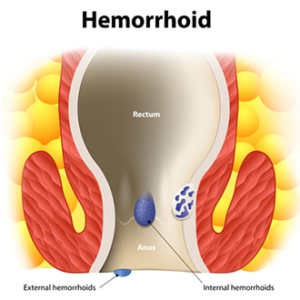Oligodendroglioma Prognosis and More
Oligodendroglioma: Understanding Diagnosis, Treatment, and Prognosis
Introduction to Oligodendrogliomas
Oligodendrogliomas are rare tumors found in the brain or spinal cord, arising from oligodendrocytes, cells responsible for producing protective tissue. While treatment options are available, the prognosis varies based on the tumor’s location, grade, and type. This article explores the types, symptoms, causes, and treatment strategies for oligodendrogliomas.
Types of Oligodendroglioma
Oligodendrogliomas can be classified as either malignant (cancerous) or benign (noncancerous), with the majority occurring in the frontal or temporal lobes of the brain, although they can also develop in the spinal cord. The two main categories are:
-
Grade II (Low-Grade) Oligodendrogliomas: These tumors grow slowly and primarily affect local tissue, often remaining asymptomatic for years before detection.
-
Grade III (Anaplastic Oligodendrogliomas): These are cancerous, fast-growing tumors that tend to be more aggressive.
Characteristics of Oligodendrogliomas
These tumors typically have a soft, grayish-red appearance and may contain mineral deposits, cysts, or areas of hemorrhage. Inflammation may also surround the tumor.
Symptoms of Oligodendrogliomas
Seizures are the most common symptom, affecting approximately 60% of individuals before they are diagnosed with an oligodendroglioma. Other symptoms include:
-
Headaches
-
Memory or cognitive problems
-
Weakness or numbness
-
Balance and coordination difficulties
-
Language issues
-
Behavioral or personality changes
Possible Causes of Oligodendrogliomas
The exact cause of oligodendrogliomas remains unknown, but genetic factors are believed to play a role. Certain genetic mutations, such as the loss of chromosomes 1p and 19q, are linked to the development of these tumors. Exposure to high levels of radiation, such as from X-rays or cancer treatments, may also increase the risk.
Who is at Risk for Oligodendrogliomas?
Oligodendrogliomas can affect anyone, but they are most commonly diagnosed in adults between the ages of 35 and 44. They occur more frequently in men and are rare in children.
How Oligodendrogliomas Are Diagnosed
To diagnose an oligodendroglioma, the following tests may be performed:
-
Neurological Exam: A physician will evaluate coordination, reflexes, balance, and any vision or hearing issues.
-
Imaging Tests: MRI or CT scans are used to determine the tumor’s size and location.
-
Biopsy: A tissue sample from the suspected tumor is examined in a lab to determine the tumor’s type and grade.
Treatment Options for Oligodendrogliomas
Treatment for oligodendrogliomas depends on the tumor’s grade, size, and location. The main treatment options include:
-
Surgery: If the tumor is in a surgically accessible area, it can be removed. Surgeons aim to remove as much of the tumor as possible without damaging surrounding healthy tissue.
-
Radiation Therapy: High-energy radiation is used to target and destroy cancer cells, often after surgery to address remaining tumor cells.
-
Chemotherapy: Medications are used to treat cancer cells throughout the body, sometimes before or after radiation therapy, to eliminate residual cancerous tissue.
For individuals who cannot undergo surgery, a combination of chemotherapy and radiation therapy may be the primary treatment approach.
Exploring Clinical Trials
Ongoing clinical trials are investigating new treatments for oligodendrogliomas, including targeted therapies, immunotherapies, and advanced chemotherapies. Speak with your healthcare provider to learn more about available clinical trials.
Survival Rates for Oligodendrogliomas
Oligodendrogliomas account for around 1.3% of all brain tumors in the U.S., with nearly 1,100 new cases diagnosed annually. Survival rates depend on various factors, including the tumor’s location, treatment approach, and the patient’s overall health and age. Survival rates vary by age group:
-
Children (ages 0-14): 94%
-
Teens and Young Adults (ages 15-39): 92.2%
-
Adults (ages 40+): 76.8%
It’s important to note that individual cases may differ, and survival statistics may not fully reflect your personal situation.
Questions to Ask Your Doctor if Diagnosed with Oligodendroglioma
If diagnosed with an oligodendroglioma, it’s crucial to ask your healthcare provider the following questions:
-
Is the tumor cancerous or noncancerous?
-
What treatment do you recommend, and why?
-
What are the chances that the treatment will be effective?
-
How can I manage the side effects of treatment?
-
Am I a candidate for a clinical trial?
Coping with an Oligodendroglioma Diagnosis
Being diagnosed with a brain tumor like an oligodendroglioma can be overwhelming. In addition to the physical challenges, you may experience emotional and cognitive difficulties. Support is available through online or in-person communities, where you can connect with others facing similar experiences. Consider reaching out to organizations like T.H.E. Brain Trust or the American Brain Tumor Association for guidance and resources.
Conclusion
Oligodendrogliomas are rare but treatable brain tumors, with various treatment options available, including surgery, chemotherapy, and radiation. While the prognosis depends on factors such as tumor grade, location, and the patient’s overall health, the five-year survival rates are promising. Early diagnosis and treatment play a critical role in improving outcomes.
Expert Tips for Oligodendroglioma Patients
-
Stay informed about new treatments and clinical trials.
-
Maintain a healthy lifestyle, including a balanced diet and regular exercise.
-
Seek emotional support from patient communities or mental health professionals.
Key Takeaways
-
Oligodendrogliomas are rare brain tumors that can be treated with surgery, chemotherapy, and radiation.
-
The survival rate depends on the tumor’s grade and the patient’s overall health.
-
Staying proactive about treatment options and seeking support can greatly improve quality of life.
Join Our Community for More Updates
Stay up-to-date with the latest news on brain tumor treatments and patient support. Subscribe to our newsletter for more insights and expert tips!






